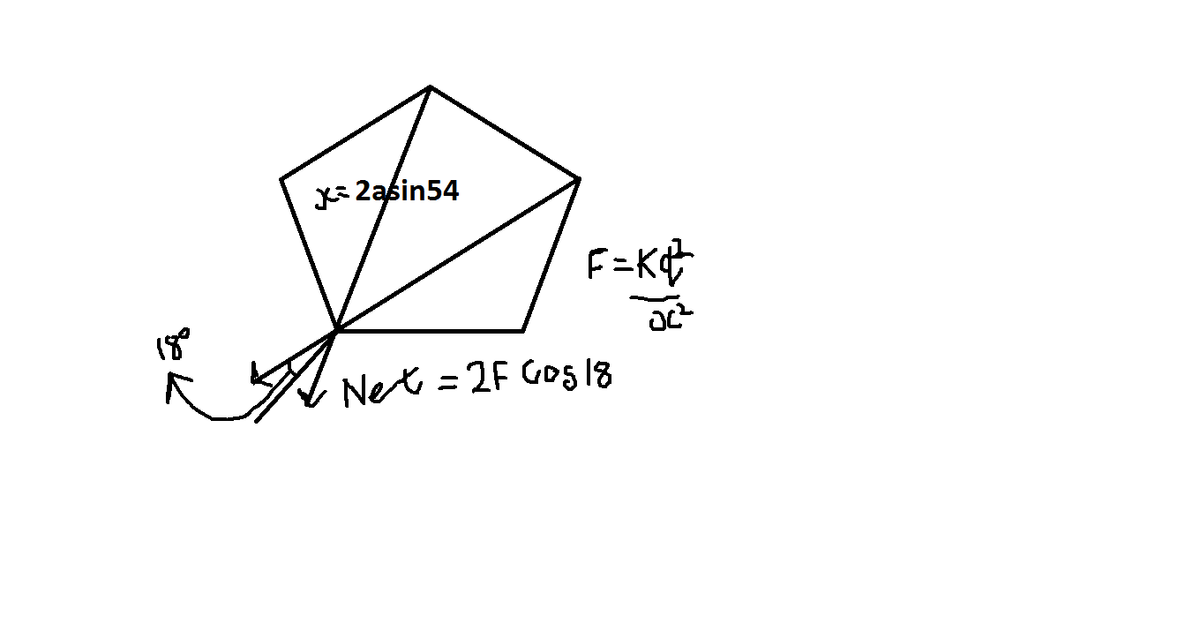Help needed in generalization
Hello everyone,
I don't know if the following generalization exists, but I want to give it a go. If you want to join, please do and help me. For this mini research to be a success, you need to help me with this problem. I found this to be little tricky and confusing stuff. Here it is.
Here is a regular pentagon named . Suppose, equal charges are placed on each of its vertex.Now here's the calculation I need from your side. Find the magnitude of the net force exerted on a charge by the other charges.
Details and Assumptions:
The length of each side of the pentagon is assumed to be .
Assume the medium to be vacuum.
Thanks
Swapnil Das
Easy Math Editor
This discussion board is a place to discuss our Daily Challenges and the math and science related to those challenges. Explanations are more than just a solution — they should explain the steps and thinking strategies that you used to obtain the solution. Comments should further the discussion of math and science.
When posting on Brilliant:
*italics*or_italics_**bold**or__bold__paragraph 1
paragraph 2
[example link](https://brilliant.org)> This is a quote# I indented these lines # 4 spaces, and now they show # up as a code block. print "hello world"\(...\)or\[...\]to ensure proper formatting.2 \times 32^{34}a_{i-1}\frac{2}{3}\sqrt{2}\sum_{i=1}^3\sin \theta\boxed{123}Comments
first find the distance between the test charge and 4 other charges. it is = a for 2 charge
first we find force due to them just write a vector and we find that one component of both is canceling
net ={2sin(36)kq^2}/(a^(2))
other which are at distance=2asin(54)
net due to them=(cos(18)/sin^2{54}){kq^2}/(2a^(2))
total={2sin(36)kq^2}/(a^(2))+(cos(18)/sin^2{54}){kq^2}/(2a^(2))
Log in to reply
Nice!! There can be a shorter way, I suppose